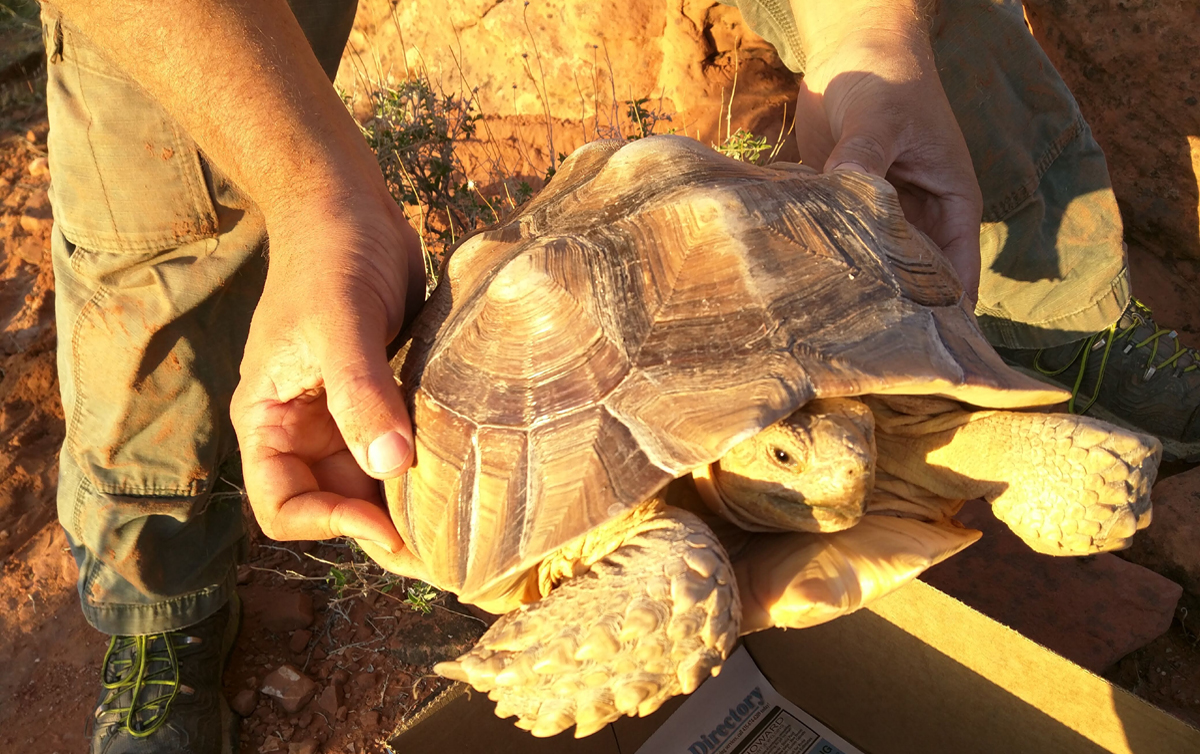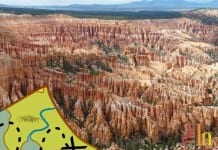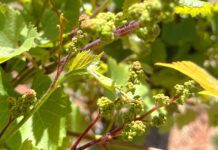
Sulcata tortoises spotted in Red Cliffs Desert Reserve
By Lacey McIntyre
Staff members at the Red Cliffs Desert Reserve had two reports of African spurred (aka sulcata) tortoises spotted in the reserve this week, which is a very serious issue for many reasons. Sulcata tortoises are not the same as native Mojave Desert tortoises found in the reserve. Unlike the Mojave desert tortoise, the sulcata tortoise does not hibernate in winter and is not adapted to live in reserve habitat and weather conditions.
These tortoises are commonly kept as pets, and they naturally evolved to deal with life in a semi-arid grassland environment, not a drier and much colder desert environment like we have in southern Utah. Sulcata tortoises rely on a very high-fiber grass-based diet to stay healthy.
There is also a concern of captive sulcata tortoises spreading disease to our native desert tortoise population.
Sulcata tortoises can be distinguished from the native Mojave Desert tortoise by the “furrows” on the tortoises’ scales. As you can see in the picture, the front legs have what look like spikes on their scales. Those spikes, or furrows, can be found on the back near the tail as well. If you ever see a tortoise that doesn’t look quite right, please take a photo and send it to us at info@redcliffsdesertreserve.com or to our biologist at mike.schijf@washco.utah.gov. We can confirm if it is indeed our native species, the Mojave Desert tortoise, or if it is an invasive species that needs a better home.
It’s not always a happy ending, but we are ecstatic to report both sulcata tortoises reported in the reserve were rescued this week! With a little help, Red Cliffs Desert Reserve staff was able to locate the burrow area, scat, and tracks of the big sulcata tortoise on Owen’s Loop.
Unfortunately, during work hours, they were unable to actually find him. A staff member and her husband went on a hike after work hours on a mission to save the tort! It took some searching and digging and, with some great leg work done earlier in the day by other staff, they were able to recover the tortoise.
The second sulcata tortoise was found near Paradise Canyon along the Gap Trail and was rescued by a Red Cliffs Desert Reserve volunteer trail steward.
We are so thankful for everyone’s hard work to bring these guys to their new homes. The people who dumped their sulcata tortoises in the reserve basically signed their death certificates; they would have frozen this winter if we didn’t find them before that happened. Don’t worry, though; plans for lots of love and attention (and warmth) are in their future.
Please help us spread the word that dumping of any household pet into the reserve (or anywhere else) is a bad idea. Any unwanted tortoise pets can be dropped off at our office at 10 N 100 E in downtown St. George, where we will find suitable homes for them. Remember, if you have a tortoise you can no longer care for, please never dump it in the wild. Not only can you take it to the reserve office but you can post a photo on Facebook, Craigslist, Instagram, or on a telephone pole in your neighborhood, and you’d be surprised how many people may be interested in properly caring for our reptile friends and giving them the homes they need and deserve!
In addition to issues with people dumping their pet tortoises, several native desert tortoises have been found this year that were poached out of the Red Cliffs Desert Reserve. We know this because many Red Cliffs Desert Reserve tortoises have unique file numbers on their shells. Red Cliffs Desert Reserve staff, along with Utah Division of Wildlife Resources, can look up these file numbers to find out when and where these tortoises were originally found.
For example, one tortoise was found earlier this year near Stone Cliff that was originally found several years ago in the Entrada area within the Red Cliffs Desert Reserve, about eight miles away! Needless to say, this tortoise did not arrive in Stone Cliff on its own.
Please remember that it is illegal to touch a desert tortoise unless you are moving it out of immediate harm’s way (such as a busy roadway). Even if not removed from the area, tortoises may void their bladder and eventually die of dehydration if unnecessarily handled. If you ever encounter someone poaching or otherwise illegally handling a desert tortoise, please call the poaching hotline immediately at (800) 662-3337. Your help with this important issue is greatly appreciated! Don’t hesitate to contact the Red Cliffs Desert Reserve if you have any questions regarding desert tortoises.
Lacey McIntyre is outreach and admin coordinator for Red Cliffs Desert Reserve.



